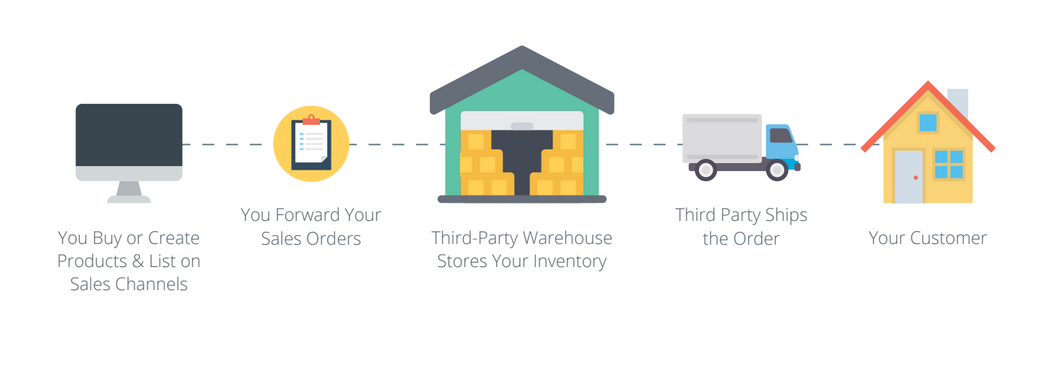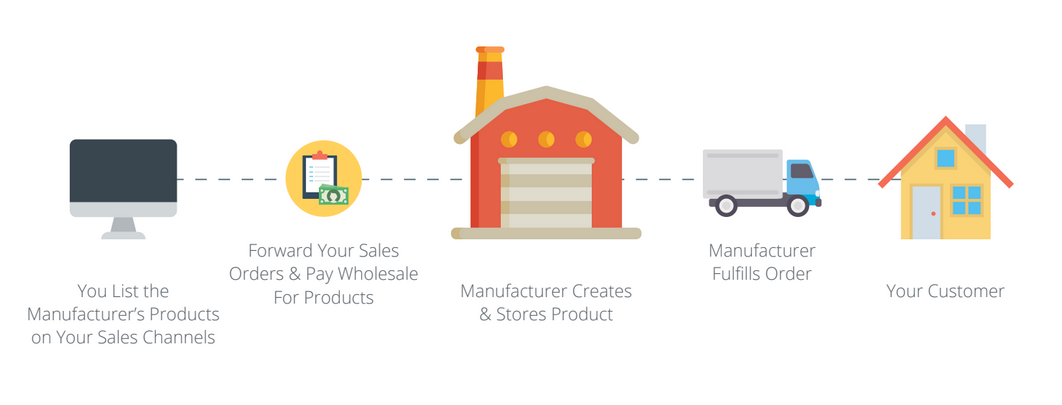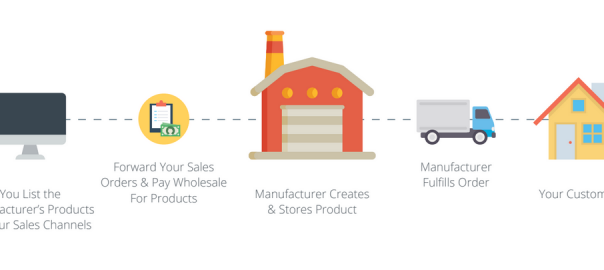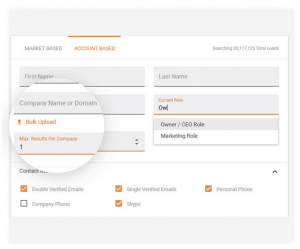
Brick-and-mortar fulfillment is cut and dry — customer comes in, customer pays, customer leaves with their new product. Ecommerce fulfillment, by contrast, is much more complicated. Remember those high school algebra problems where trains leave at different stations at different times in different directions? Welcome to ecommerce fulfillment.
Online fulfillment involves many different layers and moving parts, including third-party shipping partners, multiple storage facilities, rigid timescales with late penalties, and plenty of other headaches. For brick-and-mortar retailers hoping to break into ecommerce, the complexity of online fulfillment can scare them away from actually trying.
The good news is that, once ecommerce fulfillment is broken down, it’s a lot easier to understand and manage yourself. This guide, explains ecommerce fulfillment in a way that’s easy to understand, even for those who are first-time online retailers.
Why great fulfillment is essential
Efficiency is profitable. The more precisely you plan each leg of your fulfillment, from storage to shipping, the more pennies you pinch that can be reinvested back into the company. Choosing the best shipment methods and most strategic warehouses impacts your bottom line just as much as the products you sell or the prices at which you sell them.
But cutting costs within your company is only half the advantage of optimizing fulfillment. The other half is the potential benefit to customers, who are just as affected by your fulfillment policies as you are.
To truly understand why we have to jump ahead a bit to explain one of the biggest threats to online retail stores: cart abandonment. Although it’s hard to measure exactly how many online shoppers “give up” on their orders at the last minute, a study from Barilliance pinned it at just under 80%. That means only about a quarter of your shoppers will actually buy something from you.
To increase the number of completed sales, you have to cater to customer preferences. So what stops shoppers at checkouts? The biggest offender is the price of shipping, and the third-largest is the length of time for shipping.

“Primary reason for digital shoppers in the United States to abandon their carts as of November 2018.” Via Statista.
The dilemma is essentially finding the sweet spot between charging less for shipping and earning more for your company. But with “free shipping” increasingly becoming the norm and ecommerce competition getting crazier every day, that sweet spot leans more towards the customer.
So if you want to offer free shipping, you need to utilize the lowest possible shipping method or partner with someone who does. That also goes with free returns, another popular customer expectation, where you may need to pay for shipping twice over.
To sum it up, your chain of fulfillment has far-reaching ramifications that go beyond just overhead costs. Your fulfillment choices will affect customer acquisition, inventory management costs, and market positioning — so choose carefully.
The 3 main types of eCommerce fulfillment
You can choose from plenty of different shipping providers and storage facilities, but before you start researching each option individually, you have to pick your overall method of fulfillment. In a nutshell, you have three basic choices:
- Do everything yourself (Merchant Fulfillment)
- Partner with a shipping service (Third-Party Fulfillment)
- Have the manufacturer or supplier handle all shipping (Dropshipping)
Let’s explore each type in detail to see which works best for you.
1. Merchant fulfillment
The simplest and most straightforward option. Merchant fulfillment is when you, the seller, stores and ships your products yourself. When someone buys something from your site, the sales order goes to your storage facility and your team pulls it, prints the shipping label, and gets it to the shipping service of your choice.

That doesn’t just apply to large enterprises with multiple warehouses, but also small startups — your “team” could be just you and your “storage facility” could be your mom’s garage. As long as the package arrives safely and on time, your customers won’t question it.
The advantage of this method is control — this is a good choice if you prefer to micromanage or want to customize shipping times and providers on a per-order basis. It can also be more cost-effective at small scales; sure you have to pay for inventory storage facilities, but you don’t have to pay a third-party service provider to do what you can do by yourself.
That scalability turns into a drawback though the more successful your online store becomes. For one thing, at some point, there won’t be enough time in the day to handle every single order yourself. The cost of hiring extra workers is comparable to the cost of using a third-party service, so you have to weigh your options carefully every time your company reaches a new milestone.
Moreover, more sales mean more products and more products mean more storage fees. Small stores can store and ship their products on the cheap, but large stores require more time and money. Consider how fast you’ll likely grow before committing to this method long-term.
2. Third-party fulfillment
Why do something yourself when you can hire someone to do it for you? Third-party fulfillment relies on specialized service providers, third-party logistics (3PLs), to both store and ship your products. They don’t do this out of the kindness of their own hearts, mind you; you have to pay a regular fee.

The more popular your brand becomes, the more useful 3PLs are. If sales continue to grow, sooner or later you’ll need the extra assistance to store, pack, and ship everything. And because your business is doing so well, you won’t mind paying the cost of a 3PL. That’s not to say new startups can’t use a 3PL service, though — some companies like Fulfillment by Amazon or Shipwire can fit low-budget companies, so it’s perfectly viable.
The biggest advantage of third-party fulfillment is the time it frees up for you. Rather than coordinating every sale and shipment yourself, you can use your time to manage the actual business, devise new marketing campaigns, prospect for new products, or sniff out ways to cut costs.
The downside, though, is cost. You also don’t have control over shipments, which means fewer special orders. Plus, you have to abide by the rules and policies on the 3PL, which can limit which products or volumes you offer.
3. Dropshipping
What if you didn’t have to worry about fulfillment at all? What if your only job was selling, never mind the logistical details? If that sounds just right, you may be interested in dropshipping.
Dropshipping is when the supplier or manufacturer takes care of both the storage and shipment of products, leaving you only the task of making online sales. But since you’re doing less work, you receive less payment — you’re essentially working on commission, where the bulk of the profit goes to the supplier/manufacturer.

How much commission? That depends on competition, availability, popularity, and product category, among other things. However, a safe estimate is around 10-40%, according to Unrivaled Review.
The advantages of dropshipping, are, of course, not having to worry about fulfillment. If you’re interested in sales — and only sales — this is a good model for you. Your job will be reduced to only managing the online store, so you can give it your full and undivided attention.
The downside, though, is the low-profit margin — you’ll make less than half as much per sale as other online retailers who aren’t dropshippers. To make up the difference, you have to be extra savvy about online marketing and customer acquisition. Areas like social media and digital advertising are crucial.
Dropshipping is not for everyone. It’s highly dependent on your industry and product range, not to mention your understanding of digital marketing techniques. All-too-often, that “extra” time you save goes right back into your selling efforts — don’t forget you have to sell a lot more than other ecommerce stores to make the same profit.
Fulfilling Fulfillment
With the right know-how and a little preplanning, your fulfillment options can become one of the central value points to your online store. Brick-and-mortar stores may not typically deal with tasks like shipping labels or delivery schedules, but with a little practice you’ll be able to take care of these processes like they were second nature. And at the end of the day, your fulfillment gives you one extra opportunity to impress and win over your customers — that’s fulfilling for everyone!
Digital & Social Articles on Business 2 Community
(56)
Report Post







